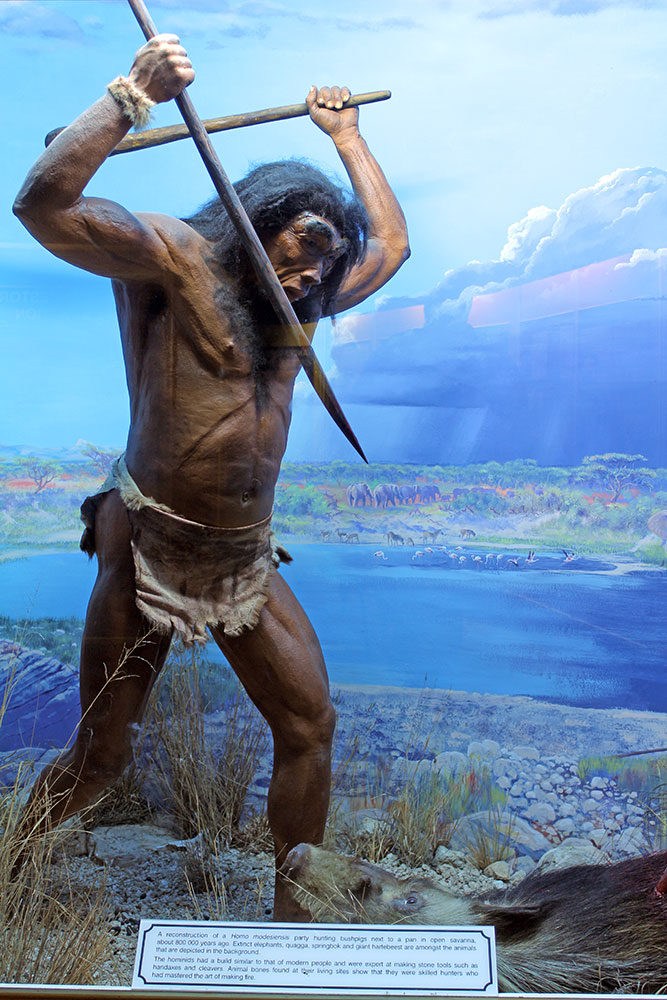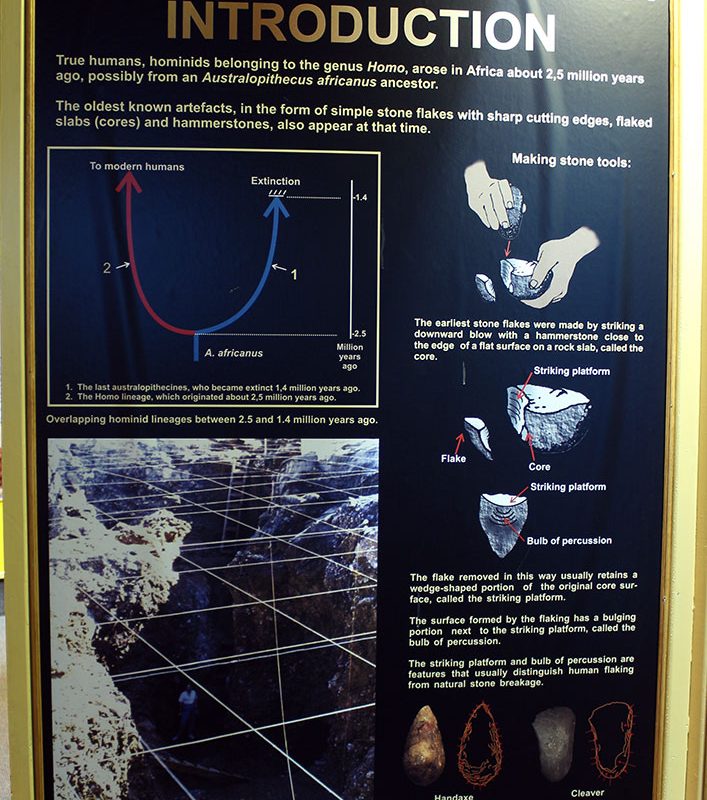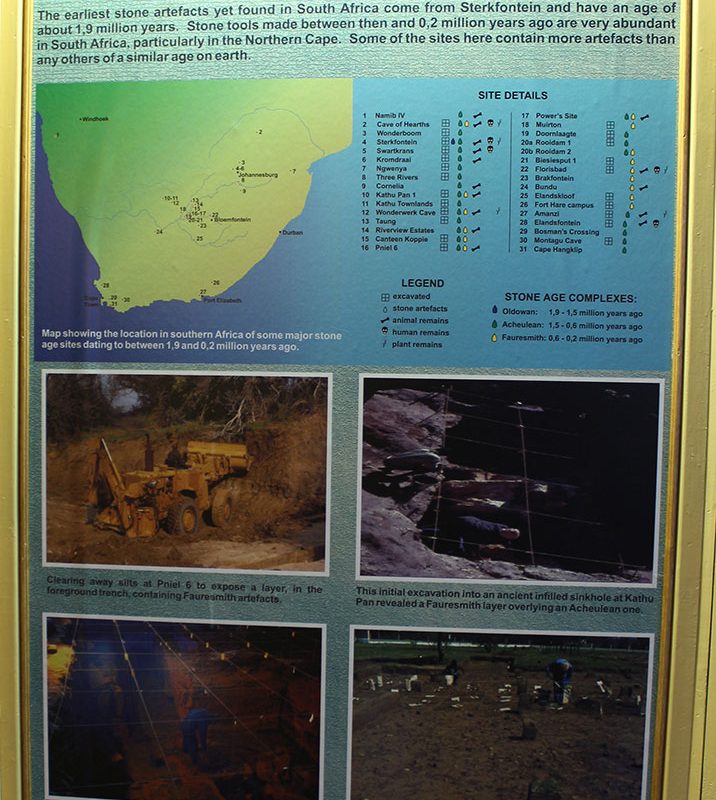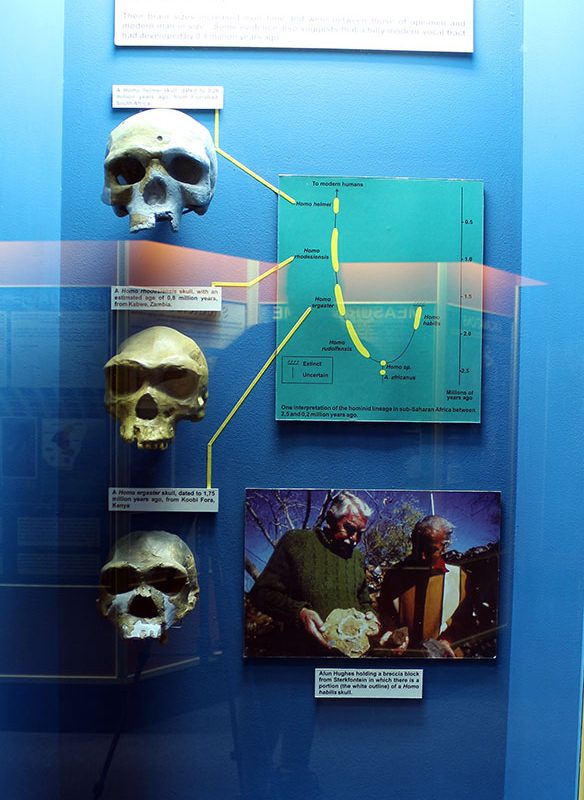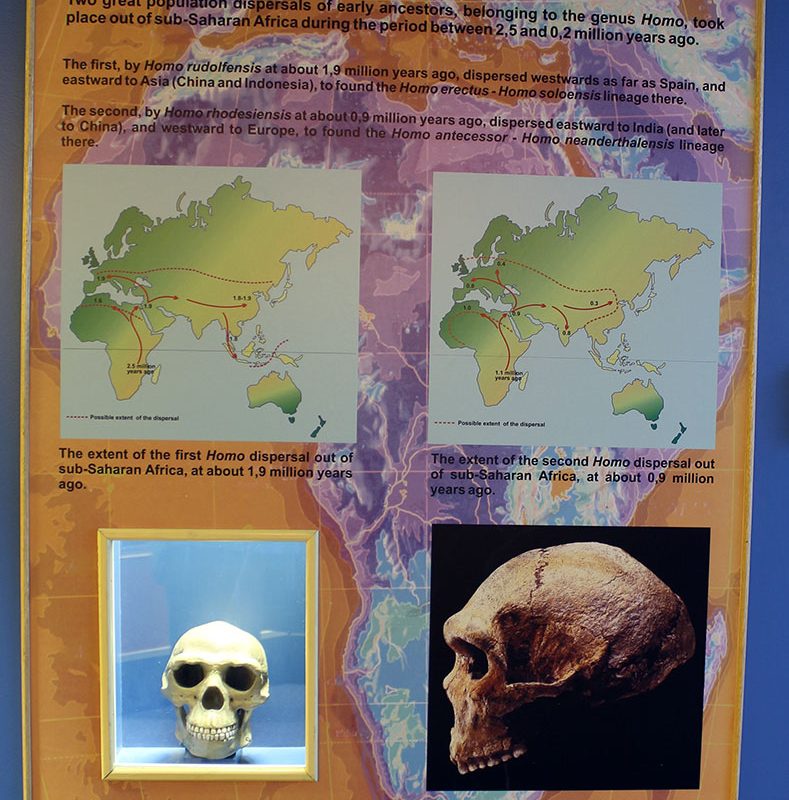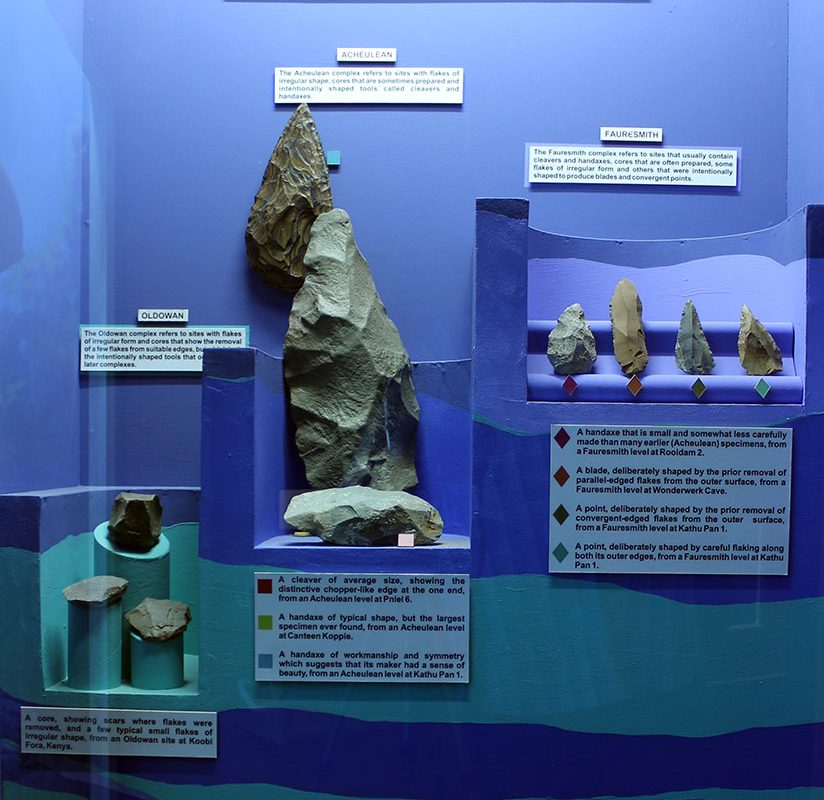Earliest humans
- Earliest humans
- https://museumsnc.co.za/new_site/wp-content/uploads/2021/04/earlies-human-thumb.jpg
- ALL CATEGORIES
- https://museumsnc.co.za/new_site/wp-content/uploads/2021/04/Earliest-humans-Voiceover.mp3
The earliest humans are represented by fossils from Africa of the genus Homo, dating from about 2.5 million years ago. They were probably the makers of the earliest known stone tools.
Various early Homo species occurred in sub-Saharan Africa. They had robust bodies, with proportions not unlike our own. Some evidence suggests that a fully modern vocal tract had developed by about a million years ago, so that they had the ability to speak. Population dispersals from Africa to Europe and Asia took place at about 1.9 million years ago; and again, by ancestors of the Neanderthals, about 900 thousand years ago.
Early stone tools of about 1.9 million years ago were found at Sterkfontain in South Africa. Artefacts from almost 2 million years ago are now also documented inside Wonderwerk Cave near Kuruman in the Northern Cape, showing use of a cave by early human ancestors. Many ‘Acheulean’ sites, of 1.6 million to 500 thousand years ago, where handaxes and cleavers are typical, have been studied in the Northern Cape. Certain key innovations in stone flaking are in evidence, for example in early core preparation techniques, at the site of Canteen Kopje. ‘Fauresmith’ sites, of some 500 thousand to about 200 thousand years ago, are notable: It is claimed that the world’s earliest stone spear-heads were present from some 500 thousand years ago, at a site at Kartoo, west of Kuruman. Some of these research findings have been made since this exhibition was completed.
Our earliest ancestors made use of natural fire from about 1.4 million years ago. By about 1 million years ago there is evidence, from Wonderwerk Cave in the Northern Cape, that they were themselves making fire. Fire was probably used by hominins for protection against predators, to flush out game, for warmth and light, and to make some foods more digestible or palatable. Life around a hearth would have had important social consequences.
